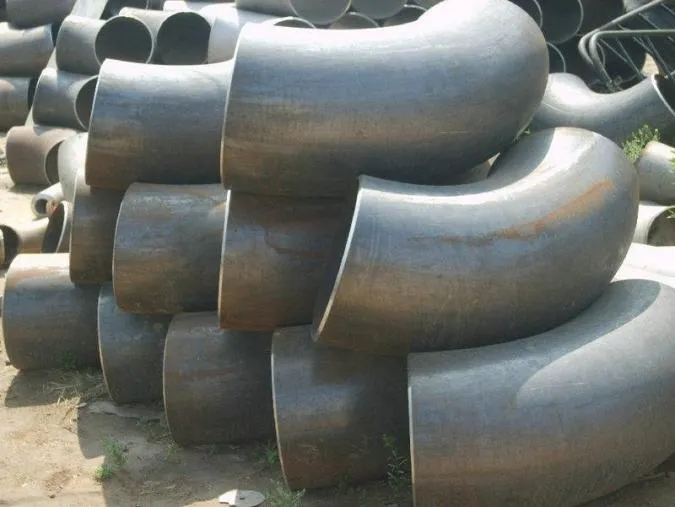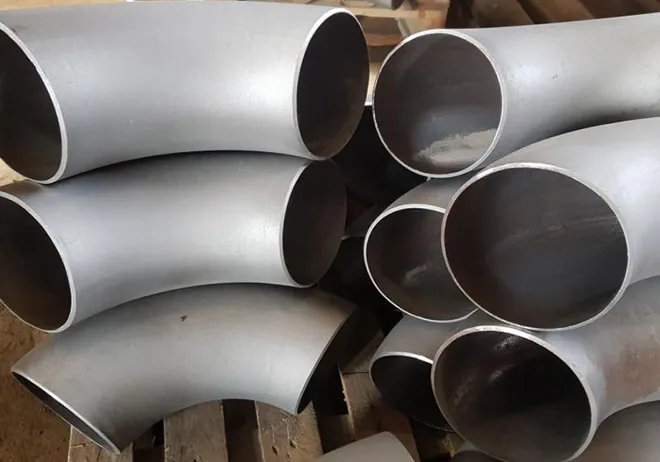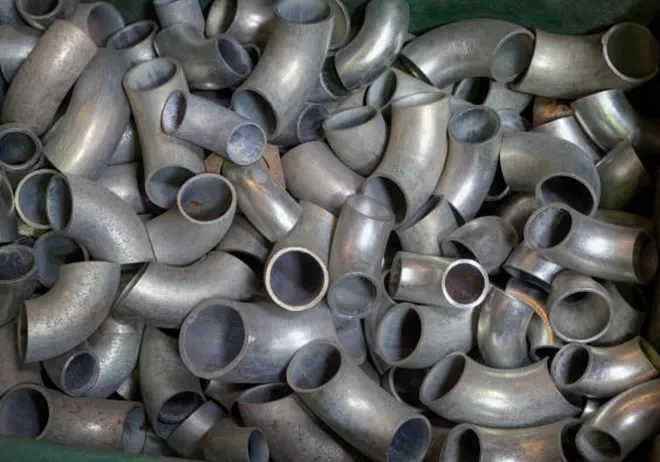-
Cangzhou Yulong Steel Co., Ltd.
-
Phone:
+86 13303177267 -
Email:
admin@ylsteelfittings.com
- English
- Arabic
- Italian
- Spanish
- Portuguese
- German
- kazakh
- Persian
- Greek
- French
- Russian
- Polish
- Thai
- Indonesian
- Vietnamese
- Zulu
- Korean
- Uzbek
- Hindi
- Serbian
- Malay
- Ukrainian
- Gujarati
- Haitian Creole
- hausa
- hawaiian
- Hebrew
- Miao
- Hungarian
- Icelandic
- igbo
- irish
- Japanese
- Javanese
- Kannada
- Khmer
- Rwandese
- Afrikaans
- Albanian
- Amharic
- Armenian
- Azerbaijani
- Basque
- Belarusian
- Bengali
- Bosnian
- Bulgarian
- Catalan
- Cebuano
- China
- China (Taiwan)
- Corsican
- Croatian
- Czech
- Danish
- Esperanto
- Estonian
- Finnish
- Frisian
- Galician
- Georgian
- Kurdish
- Kyrgyz
- Lao
- Latin
- Latvian
- Lithuanian
- Luxembourgish
- Macedonian
- Malgashi
- Malayalam
- Maltese
- Maori
- Marathi
- Mongolian
- Myanmar
- Nepali
- Norwegian
- Norwegian
- Occitan
- Pashto
- Dutch
- Punjabi
- Romanian
- Samoan
- Scottish Gaelic
- Sesotho
- Shona
- Sindhi
- Sinhala
- Slovak
- Slovenian
- Somali
- Sundanese
- Swahili
- Swedish
- Tagalog
- Tajik
- Tamil
- Tatar
- Telugu
- Turkish
- Turkmen
- Urdu
- Uighur
- Welsh
- Bantu
- Yiddish
- Yoruba

Dec . 05, 2024 09:38 Back to list
Material Selection for Butt Weld Elbows in High-Temperature Applications
When designing or maintaining piping systems for high-temperature applications, selecting the right materials for components like butt weld elbows is crucial for ensuring long-term performance, safety, and efficiency. Butt weld elbows, used to connect pipe sections while allowing changes in direction, must withstand elevated temperatures without compromising structural integrity. This article delves into the key considerations for material selection for butt weld elbows in high-temperature environments, the factors influencing material choice, and the common materials used in such applications.

Importance of Material Selection for High-Temperature Systems About Butt Weld Elbow
In high-temperature systems, whether in power generation, chemical processing, or oil and gas operations, components like butt weld elbows must endure not only the heat but also the associated stresses from pressure, thermal cycling, and chemical exposure. Improper material selection can lead to premature failure, leaks, and safety hazards. The material must maintain its mechanical properties, such as strength, flexibility, and resistance to oxidation, while providing a secure, leak-proof connection between pipes.
Key Factors in Material Selection About Butt Weld Elbow
When selecting a material for butt weld elbows in high-temperature applications, several factors need to be considered:
Temperature Resistance About Butt Weld Elbow
The ability to withstand high temperatures without degrading is the most critical factor. Materials must retain their mechanical properties, such as tensile strength and ductility, at the operating temperatures of the system. Materials that soften, creep, or lose strength at elevated temperatures can lead to joint failure.
Corrosion and Oxidation Resistance About Butt Weld Elbow
At high temperatures, metals are more susceptible to oxidation and corrosion, particularly when exposed to gases or fluids that contain moisture, sulfur, or other corrosive elements. Materials with high resistance to corrosion and oxidation are essential to maintain the integrity of the system and prevent leaks or material degradation.
Thermal Expansion About Butt Weld Elbow
Materials used in high-temperature applications must also account for the effects of thermal expansion. When heated, materials expand and contract, which can cause stress at welded joints. The material selected should have a low coefficient of thermal expansion to minimize such stresses and reduce the risk of joint failure.
Strength and Durability of Butt Weld Elbow
The material must have high tensile strength and fatigue resistance to endure the repeated thermal cycling that occurs in high-temperature systems. It must maintain its structural integrity under the pressure exerted by the fluid or gas within the pipes, as well as the temperature fluctuations that can cause materials to expand and contract.
Welding Compatibility of Butt Weld Elbow
Since butt weld elbows are joined to the system using welding techniques, the material must be compatible with welding methods such as TIG or MIG welding. Some materials may require special welding processes to avoid weakening the joint or introducing defects.
Common Materials for Butt Weld Elbows in High-Temperature Applications
Several materials are commonly used for weldable pipe elbows in high-temperature environments. These materials are chosen based on their ability to withstand the heat, pressure, and harsh conditions of the application.
Carbon Steel Butt Weld Elbow
Carbon steel is one of the most widely used materials for steel weld elbows in high-temperature applications. Its primary advantage is its cost-effectiveness and availability. Carbon steel can withstand temperatures up to around 450°C (840°F) without significant loss of strength. However, for applications involving higher temperatures or exposure to corrosive environments, carbon steel may not offer the required performance. It is often used in applications where the temperature is moderate, such as in certain boiler systems or steam pipes.
Stainless Steel Butt Weld Elbow
Stainless steel, particularly grades like 304, 316, and 321, is frequently used for butt weld elbows in high-temperature applications due to its excellent resistance to oxidation, corrosion, and high temperatures. Stainless steel maintains its strength and toughness even at temperatures up to 800°C (1470°F). Its ability to resist scaling and corrosion makes it ideal for use in industries like petrochemical, food processing, and power generation, where high temperatures and corrosive substances are common.
Grade 316 stainless steel, for example, is highly resistant to corrosion and is often used in marine and chemical processing environments, while 321 stainless steel is resistant to sensitization, making it ideal for high-temperature environments with elevated levels of thermal cycling.
Alloy Steel Butt Weld Elbow
For even higher-temperature applications, alloy steels, such as 9Cr-1Mo, 2.25Cr-1Mo, and P22, are often used for butt weld elbows. These materials are designed to withstand temperatures exceeding 600°C (1110°F) and offer enhanced strength and resistance to creep, which is the tendency of materials to deform under sustained high temperature and pressure.
Alloy steels are commonly used in power plants, refineries, and other heavy industries where systems operate under extreme temperature and pressure conditions. Their ability to retain mechanical properties at elevated temperatures makes them ideal for critical applications where safety and performance are paramount.
Nickel Alloy Butt Weld Elbow
Nickel alloys, such as Inconel 625 and Incoloy 800, are chosen for applications where extremely high temperatures, often exceeding 1000°C (1830°F), are present. These alloys offer exceptional resistance to oxidation, corrosion, and thermal fatigue, which is why they are used in applications like gas turbines, nuclear reactors, and certain high-temperature chemical processes.
Nickel alloys are particularly valuable in environments with significant thermal cycling, as they can maintain their mechanical properties even under extreme conditions. Their high resistance to both heat and corrosive substances makes them a go-to material for aerospace and high-tech applications.
Latest news
-
ANSI 150P SS304 SO FLANGE
NewsFeb.14,2025
-
ASTM A333GR6 STEEL PIPE
NewsJan.20,2025
-
ANSI B16.5 WELDING NECK FLANGE
NewsJan.15,2026
-
ANSI B16.5 SLIP-ON FLANGE
NewsApr.19,2024
-
SABS 1123 FLANGE
NewsJan.15,2025
-
DIN86044 PLATE FLANGE
NewsApr.19,2024
-
DIN2527 BLIND FLANGE
NewsApr.12,2024
-
JIS B2311 Butt-Welding Fittings LR/SR 45°/90° /180°Seamless/Weld
NewsApr.23,2024













